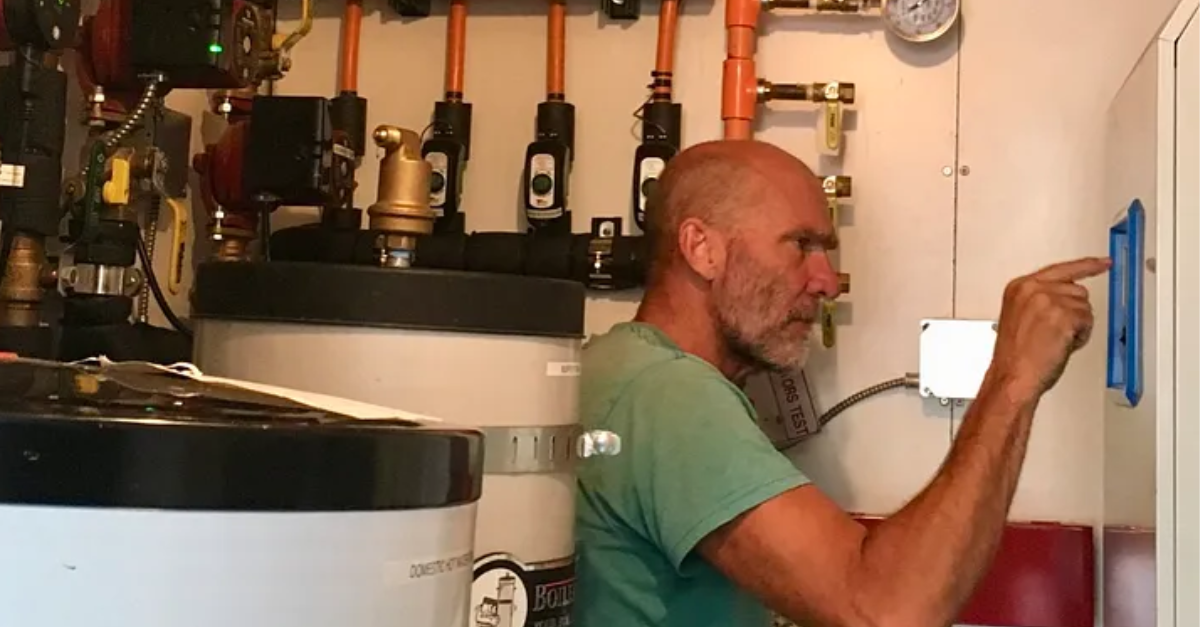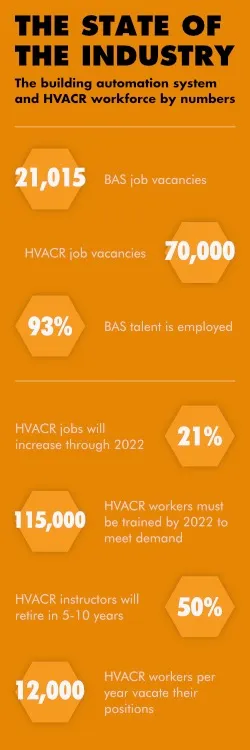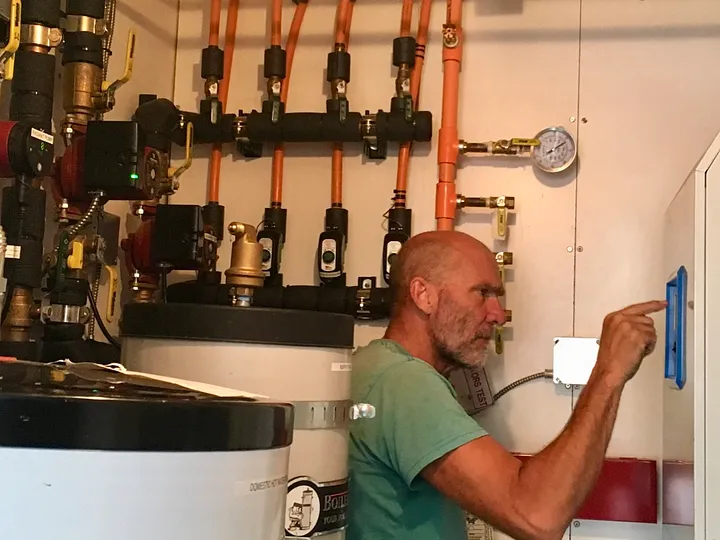
Autonomous Buildings: The Solution to the HVACR Labor Shortage

There is a ticker on the Association of Controls Professional’s website indicating the average weekly BAS job vacancies, which currently sits at an astounding 19,574 and rising. Several factors contribute to this incoming crisis: baby boomers who predominately hold these jobs are retiring, the education industry’s push for college-bound tracks strays talent from skilled labor, and it’s simply not an attractive job anymore.
Ken Smyers of ControlTrends notes in an interview with PassiveLogic “For a lot of reasons we might be our own worst enemy in bringing new people into our world because of … the impression you make on young people where they come into … these facilities” and the technology is not “cool, clever, smart” and keeps us from “attracting the most intelligent people that are available.”
“I’ve heard for years that what we do isn’t ‘techie’ enough to lure attention away from coding, analytics, general computing, electrical engineering, and on and on.” — Philip Windham, President of Nortek Global HVAC
People choose their jobs like every decision in life: based on emotion — and there is a stigma that HVACR and controls jobs are too “blue collar”, not skilled, and are perhaps lower paying and less desirable.
“Individuals…don’t view the work of an HVAC technician as glamorous” — Trane Blog
The building controls industry is feeling the labor shortage — and is scrambling to find solutions. Technical training programs are popping up around the country in collaboration with industry leaders. For example, Siemens is also involved in a community college training program. Portland, OR based HVAC services company Reitmeier started its own Reitmeier University which pays future workers to study skilled trades over the course of four years. Industry associations like Air Conditioning Contractors of America (ACCA) are teaming up with government to create incentives to hire and train 75,000 workers in the next 5 years. The ACHR News is using its platform to set the record straight that BAS and HVACR jobs are high-paying and skilled.

The truth is that none of these solutions will be effective without solving the fundamental technology gap. PassiveLogic’s deep digital twins foundation does just that, enabling a host of features from “sexy” UI to continuous commissioning to AI-fueled guaranteed energy savings. Troy Harvey, PassiveLogic CEO, describes the labor problem and solution vividly: “There’s an underlying happiness quotient that I think is part of the challenge we see in our industry. What we’re being asked to do is fundamentally not possible with the technology we have, which leads to a lot of dissatisfaction. As an automation engineer you’re constantly being yelled at and told how you did it wrong. You could go to Apple instead and make an app and everybody’s going to high five you. So we have this problem. We need to realign the industry and make it so that, ‘Hey, every day I go to work, I’m working with the world’s coolest technology.’” Troy further points out that the expectation “makes sense because it’s the world’s biggest control space.”
Traditional industries suffer from a lack of attention from technologists. And often the AI/ML that does wind up entering traditional industry causes huge disruption to labor markets (see, manufacturing and truck driving). PassiveLogic addresses the technology gap while simultaneously enabling the current labor market — making controls work exciting and engaging and cutting edge — and expanding the market for controls to the 97% of buildings that currently can’t afford controls. With a more intuitive hardware and software system built from the ground up, PassiveLogic creates not only an improved user experience for a broader range of workers but also a more attractive solution that can bring new skilled labor into the industry.
PassiveLogic is developing the the first fully autonomous platform for buildings, built on digital twins from the ground up.
